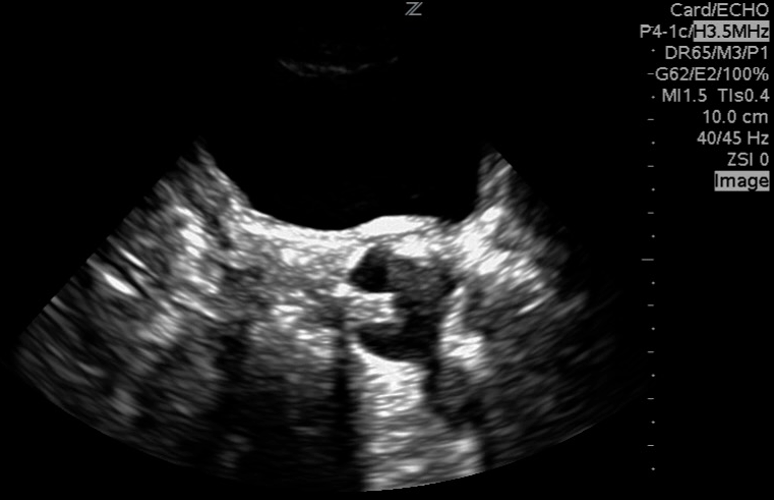Elevated Post-Void Residual
Bladder capacity and PVR volumes increase with age and can vary by gender [12,13]. As such, no single cutoff defines an elevated PVR in all pediatric patients. However, a PVR greater than 10% of the pre-void bladder volume estimated bladder capacity is generally considered abnormal and warrants further investigation [14]. Clinical judgment remains essential, as acceptable PVR values may vary depending on the child’s age, gender, bladder capacity and individual clinical context. Always refer to your institution’s local guidelines for specific reference ranges.
Debris
Debris within the bladder lumen in non-catheterized patients is not considered normal and may indicate an underlying issue (figure 15). Additionally, dense debris (seen as echogenic masses or clumps within the bladder) in catheterized patients is also not considered normal and may suggest complications such as infection, bladder stone formation, or catheter-related obstruction.
Residual bladder fullness post catheterization
If the bladder remains distended after catheter drainage, it may indicate that the Foley catheter is either obstructed or mispositioned, preventing complete drainage (Figure 16).
*Residual fluid within the bladder would only be normal if the catheter has been intentionally clamped for bladder filling.
Foley balloon mispositioning
If the Foley catheter is not visualized within the bladder lumen, it may be mispositioned outside the bladder, in the urethra, or in adjacent structures, which could interfere with proper drainage and function (Figure 17).
Figure 15: Distended bladder in the transverse position with echogenic debris.
Figure 16: Distended bladder despite Foley catheter in situ, suggesting the catheter is clamped or obstructed. Video courtesy of Dr. Dave Kirschner, used with permission.

Figure 17: Sagittal image of the bladder with foley catheter in the urethra. Image courtesy of Dave Kirschner, used with permission.
